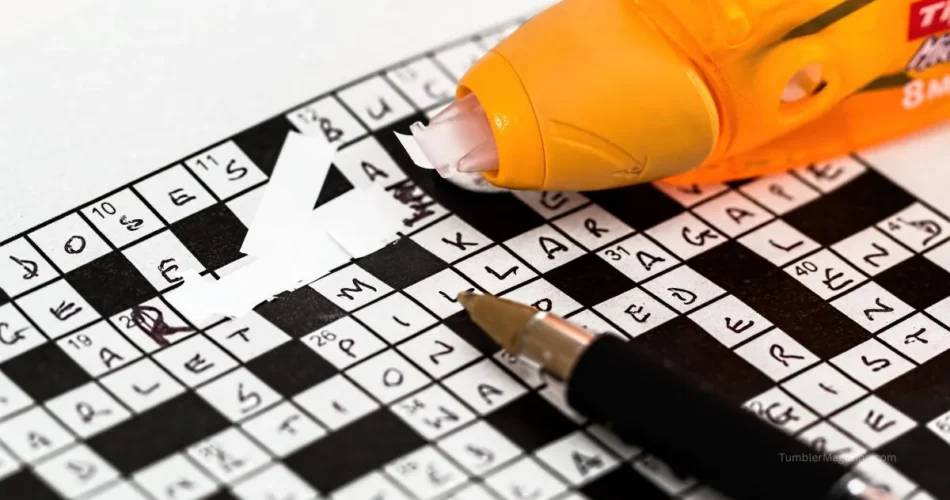Drafting in professional sports is a delicate art, a balancing act between potential and risk. However, not all picks pan out as expected. An unsuccessful draft pick refers to a player chosen with high hopes but who ultimately falls short of expectations. These instances serve as valuable learning opportunities for teams and scouts alike. The New York Times conducted a study shedding light on the frequency and impact of unsuccessful draft picks across various sports leagues. The insights gleaned from this study provide crucial lessons on the importance of thorough scouting and decision-making processes.
The repercussions of selecting an underperforming player extend far beyond the individual level; they can significantly hinder team performance and morale. Drawing parallels to crossword puzzles, where one wrong answer can disrupt the entire grid, an unsuccessful draft pick can destabilize a team’s dynamics.
Understanding the reasons behind player failure is key to avoiding similar pitfalls in future drafts. Whether due to injury, poor fit within the team’s system, or lack of mental fortitude, identifying these factors is essential for making informed drafting decisions that maximize success rates.
Table of Contents
Defining an Unsuccessful Draft Pick
Drafting a player in professional sports is a pivotal moment for any team. It involves selecting an athlete who is believed to have the potential to contribute significantly to the organization’s success. However, not every draft pick turns out as expected.
An unsuccessful draft pick refers to a player who fails to meet the expectations set by the team during the drafting process. This could be due to various factors such as injuries, lack of skill development, or simply not fitting into the team’s system seamlessly.
Teams invest time, resources, and hope into these picks with the anticipation of boosting their performance on the field or court. When a draft pick does not pan out as hoped, it can have long-lasting effects on both the player and the team itself.
The label of being an unsuccessful draft pick can carry significant weight in sports circles and impact how players are perceived by fans, coaches, and even future teams they may join.
Insights from The New York Times Study
In a recent study conducted by The New York Times, researchers delved into the world of unsuccessful draft picks in sports. They analyzed patterns and trends to uncover valuable insights for teams and fans alike.
The study revealed that one common factor among unsuccessful draft picks is the lack of thorough research and evaluation before making a selection. Teams often overlook crucial aspects such as character traits, work ethic, and injury history.
Moreover, the study highlighted the importance of considering long-term potential over short-term gains when drafting players. Rushed decisions based solely on immediate needs can lead to costly mistakes down the line.
By shedding light on these key findings, The New York Times study serves as a reminder for teams to approach their draft selections with caution and diligence. Learning from past errors is essential in avoiding future disappointments in the world of sports drafting.
The Impact of Unsuccessful Draft Picks on a Team
The impact of unsuccessful draft picks on a team can be profound and long-lasting. When a team invests time, resources, and hopes in a player who doesn’t meet expectations, it can set the team back significantly.
Not only does it affect the team’s performance on the field or court, but it also impacts morale and confidence within the organization. Team dynamics may suffer as trust in decision-making processes wavers.
Financially, unsuccessful draft picks can be costly for teams. Wasted contracts and lost opportunities for talented players hurt both the immediate budget and long-term strategic planning.
Moreover, fans’ support may dwindle if they feel that their favorite team is consistently making poor choices in drafting new talent. This loss of fan engagement could further harm the overall reputation and success of the team.
In essence, an unsuccessful draft pick isn’t just about one player—it ripples through every aspect of a team’s operation and can have lasting effects on its competitiveness and standing in the league.
Connection Between Unsuccessful Draft Picks and Crossword Puzzles
Drafting an unsuccessful player can be likened to solving a challenging crossword puzzle. Just like in a puzzle, teams must carefully analyze and strategize before making their pick. The process requires careful consideration of all the pieces available and how they fit together.
In both scenarios, one wrong move can lead to setbacks. Similar to filling in incorrect answers on a crossword, choosing the wrong player in a draft can have long-lasting repercussions for a team. It’s essential to approach both tasks with precision and attention to detail.
The connection between unsuccessful draft picks and crossword puzzles lies in the need for critical thinking and foresight. Teams must think several steps ahead when selecting players just as puzzlers anticipate how each answer affects the overall completion of the puzzle.
Successful drafting and completing a crossword require patience, strategy, and an understanding of how each decision impacts the bigger picture.
Reasons Behind Player Failure
One of the key reasons behind player failure in the draft pick process is the lack of thorough scouting and evaluation. Teams may overlook crucial factors such as injury history, work ethic, or off-field behavior, leading to selecting players who may not live up to expectations.
Another contributing factor could be poor fit within a team’s system or culture. A player might possess great talent but struggle to adapt to the coaching style or playing strategies of their new team, hindering their performance on the field.
Additionally, external pressures like media scrutiny, fan expectations, and high salary contracts can weigh heavily on young athletes drafted into professional leagues. These pressures can impact their mental well-being and confidence levels, affecting their ability to excel in a competitive environment.
Moreover, unforeseen circumstances such as injuries or personal issues can derail a promising career before it even takes off. The unpredictable nature of sports means that even the most talented individuals are not immune to setbacks that can lead to underperformance.
Key Findings
Delving into the key findings surrounding unsuccessful draft picks sheds light on crucial insights. One prominent discovery is the correlation between early success and sustained performance in professional sports. Players who peak early often struggle to maintain their momentum, leading to disappointment for teams banking on long-term success.
Moreover, a common thread among unsuccessful draft picks is the lack of mental resilience and adaptability when faced with challenges. The ability to navigate setbacks and evolve one’s game is paramount in the competitive landscape of professional sports.
Additionally, research suggests that overlooking character traits such as work ethic, coachability, and team chemistry can have detrimental effects on a player’s career trajectory. These intangible qualities play a significant role in determining an athlete’s ultimate success or failure at the highest level.
By analyzing these key findings, teams can better equip themselves to make informed decisions during the drafting process. Understanding these nuances can help mitigate the risks associated with selecting prospects with high potential but uncertain outcomes in the ever-evolving world of professional sports.
Implications and Takeaways
Unsuccessful draft picks can have significant implications for a team’s future success. When a team invests time, resources, and hopes in a player who doesn’t meet expectations, it can set them back in their pursuit of greatness.
The repercussions of choosing the wrong player go beyond just on-field performance. It can impact team morale, fan support, and even financial stability. Teams must be mindful when making draft selections to avoid these negative outcomes.
One key takeaway from unsuccessful draft picks is the importance of thorough scouting and evaluation processes. Teams need to conduct comprehensive research on potential prospects to minimize the risk of selecting players who may not fit their needs or culture.
Learning from past mistakes is crucial in improving future drafting strategies. By analyzing why certain picks didn’t pan out as expected, teams can adjust their approach to make more informed decisions in the future.
Highlighting the Importance of Selecting Wisely
Drafting players for a sports team is a critical decision that can shape the team’s future. The importance of selecting wisely cannot be overstated. Teams invest time, resources, and hopes in their draft picks, aiming to secure talent that will contribute positively to their success.
A successful draft pick can elevate a team’s performance and morale, while an unsuccessful one can lead to setbacks and disappointment. Therefore, thorough research, analysis, and consideration are essential when making drafting decisions.
By highlighting the importance of selecting wisely in drafts, teams can mitigate risks associated with potential failures and maximize the chances of securing top-tier talent. Strategic planning and evaluation play crucial roles in ensuring that each draft pick aligns with the team’s goals and values.
In competitive environments like professional sports leagues, every choice matters. Teams must prioritize diligence and foresight when making selections to avoid the pitfalls of unsuccessful draft picks.

